
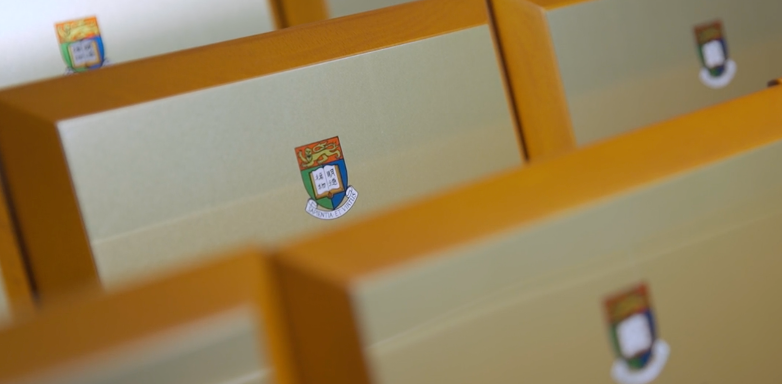
{{'Newsletter' | t}}
Student Publication Highlights
Our research postgraduate students are actively engaged in all professional aspects of the field and publishing in top journals. The Graduate School is pleased to feature the below works and publications of our students:
Voluntary Eugenicists: The Interaction and Circulation of Knowledge between the Institute for Eugenics and the Swedish General Public during the 1920s and 1930s
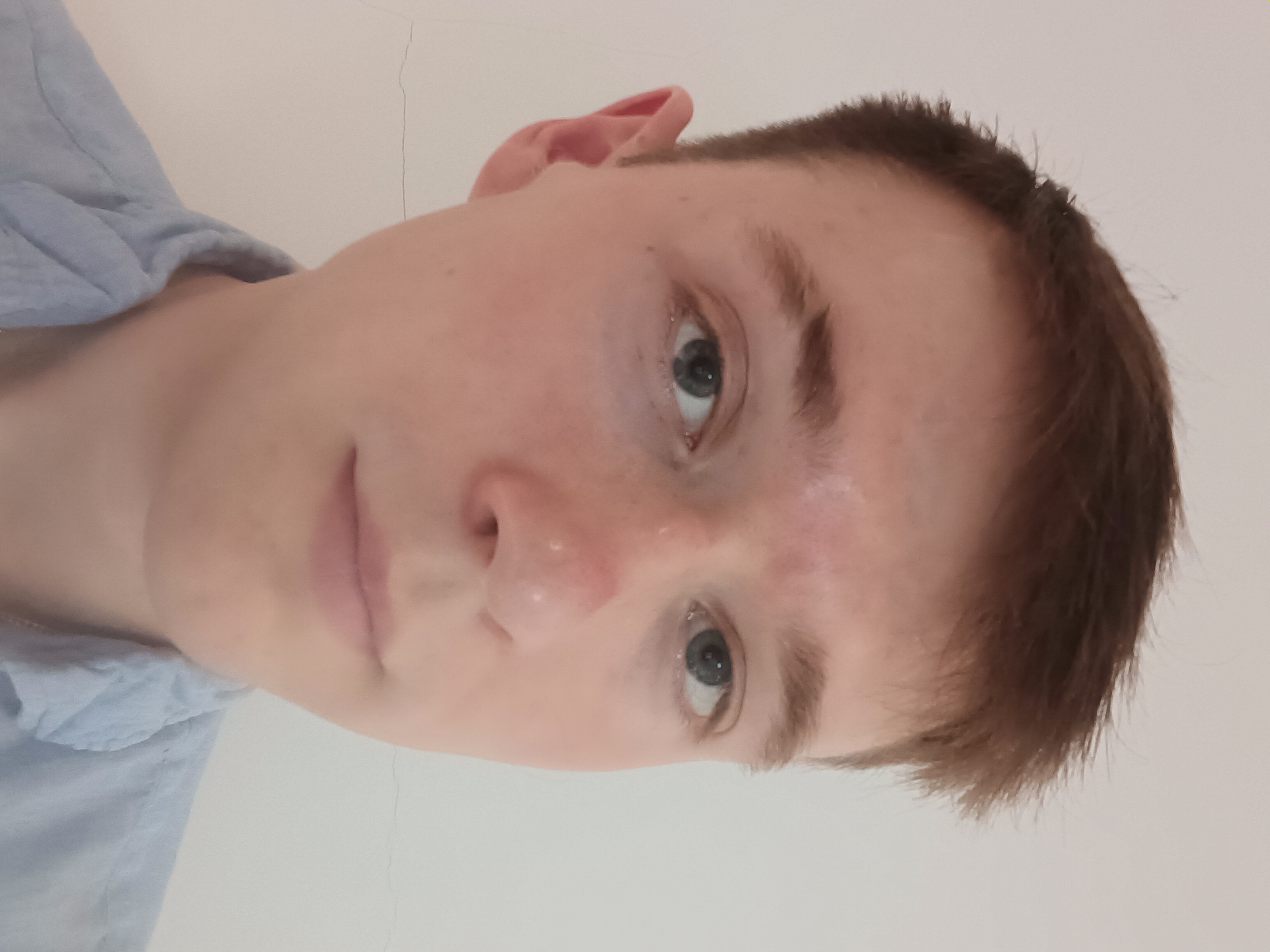
Måns Ahlstedt Åberg is a fourth-year PhD student in School of Modern Languages and Cultures (European Studies) studying how overseas Chinese in Europe contributed to spreading knowledge about China in their new environment in around the 1750s–1840s. In mid-August 2022, his book developed from his master’s thesis in history was published by the Swedish publishing house Gidlunds förlag. Frivilliga rasbiologer (Swe., Voluntary Eugenicists) focuses on the collaboration between the Swedish Institute for Eugenics and the general public in Sweden between 1922 and 1935. The author shows that during this time period, there were numerous examples of this kind of collaboration, for example, the voluntary sending of genealogical information or photographs of individuals to the eugenicists at the institute. The book was published with the financial aid of five Swedish foundations.
A Versatile, Incubator-Compatible, Monolithic GaN Photonic Chipscope for Label-Free Monitoring of Live Cell Activities
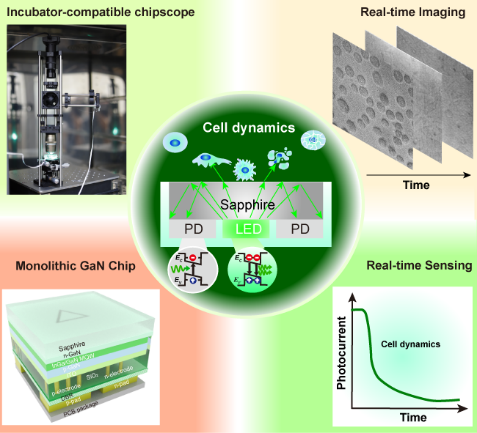
Quantitatively monitoring cellular activities is important for understanding their biological functions and the therapeutic responses of cells to drugs. However, existing approaches are often hindered by their sophisticated labelling processes, time-consuming preparation steps and bulky apparatus.
An interdisciplinary collaboration comprising PhD students Jixiang Jing, Feng Xu, Linjie Ma (Department of Electrical and Electronic Engineering, EEE) and Xingyu Xia (Department of Mechanical Engineering, ME), led by Dr. Zhiqin Chu (EEE), Dr. Yuan Lin (ME) and Dr. Kwai Hei Li (School of Microelectronics, Southern University of Science and Technology) developed a GaN-based chipscope to quantitatively monitor the progression of various intracellular processes in a label-free manner. Specifically, the GaN-based monolithic chip enables not only a photoelectric readout of cellular/subcellular refractive index changes but also the direct imaging of cellular/subcellular ultrastructural features using a customised differential interference contrast microscope. Additionally, this miniaturised chipscope adopts an ultra-compact design, which can be readily mounted with conventional cell culture dishes and placed inside standard cell incubators for real-time observation of cell activities. This established device provides a new way for broad fundamental cell biology studies and clinical applications.
This work has been published in the top multidisciplinary journal Advanced Science. A US provisional patent has currently been filed.
All-Optical Modulation of Single Defects in Nanodiamonds: Revealing Rotational and Translational Motions in Cell Traction Force Fields
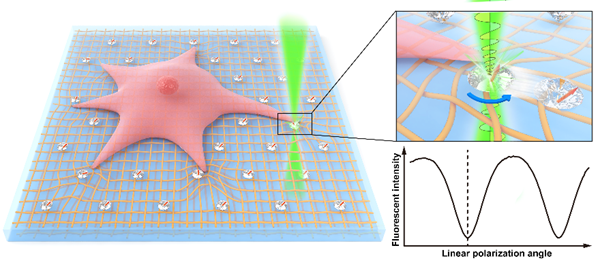
Measuring the mechanical force between cells and their 3D microenvironment is significant for many biological processes. Current traction force microscopy relies on measuring the cell-driven deformation of polymer substrates loaded with markers (e.g., fluorescent beads or pillars). These methods can provide translational motion information of the markers but lack information on their rotational motions due to their isotropic properties.
Recently, a research team – including PhD students Lingzhi Wang and Tongtong Zhang (EEE) and PhD graduate and current postdoctoral fellow Xi Wei (ME), led by Dr. Zhiqin Chu (EEE) and Dr. Yuan Lin (ME) – solved the above problem via replacing previous marks with fluorescent nanodiamonds. Specifically, they utilised the optical polarisation property of single nitrogen-vacancy centres in nanodiamonds to reveal nanodiamonds’ high-precision rotational movements (in plane) in the cell adhesive substrate. Using this novel tool, they successfully captured the rotational movements of fluorescent nanodiamonds at the cell edge (4.6–13.3 degrees), realising a high-precision caption of cell mechanical signals in complex physiological environments.
This phenomenon is consistent with theoretical calculations and previous findings that cell traction force is strongest at the cell edge. Their study provides a multi-dimensional force measurement tool for biomechanical work to study the complex mechanical relationship between cells and microenvironments. The results have recently been published in Nano Letters.
High-Quality Diamond Microparticles Containing SiV Centers Grown by Chemical Vapor Deposition with Preselected Seeds
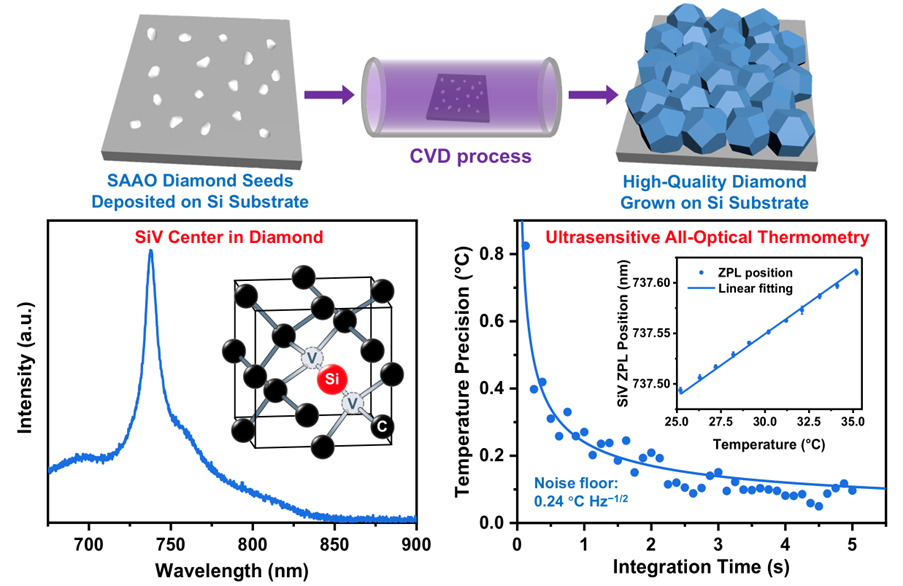
Diamond materials have demonstrated copious applications in a wide range of areas due to their extraordinary features. Therefore, the diamond gemstone has been widely explored and gives rise to significant scientific and commercial value, and various methods, such as chemical vapor deposition (CVD) – have been developed to fabricate diamond materials with desired properties. However, the conventional CVD diamonds grown by detonation nanodiamonds seeds are considered unsuitable for the most demanding applications that require diamonds with superior properties, e.g., stable and sound surface functionalities, high crystallinity, stable colour centres, highly emissive features, etc.
Here, a research team including PhD students Tongtong Zhang, Jixiang Jing and Yau Chuen Yiu and MPhil student Madhav Gupta that was led by Dr. Zhiqin Chu (EEE) proposed using their previously developed clean and rounded salt-assisted air-oxidized (SAAO) high-pressure high-temperature nanodiamonds as CVD seeds to grow high-quality diamond microparticles on the silicon substrate. This method enables scale-up manufacturing of ultra-clean nanodiamonds, with a rounded shape transformed from the original shard-like shape. Moreover, the ultra-clean and rounded SAAO nanodiamonds could be used as seeds to grow high-quality diamond microparticles containing silicon-vacancy centres with superior properties. The as-grown diamond microparticles have demonstrated great potential in various practical applications, for example, ultrasensitive all-optical thermometry measurements. These findings, which have been published in the Journal of Materials Chemistry C, will significantly enhance the scope of diamond materials in diverse scientific and industrial fields, particularly those requiring high-quality materials.
